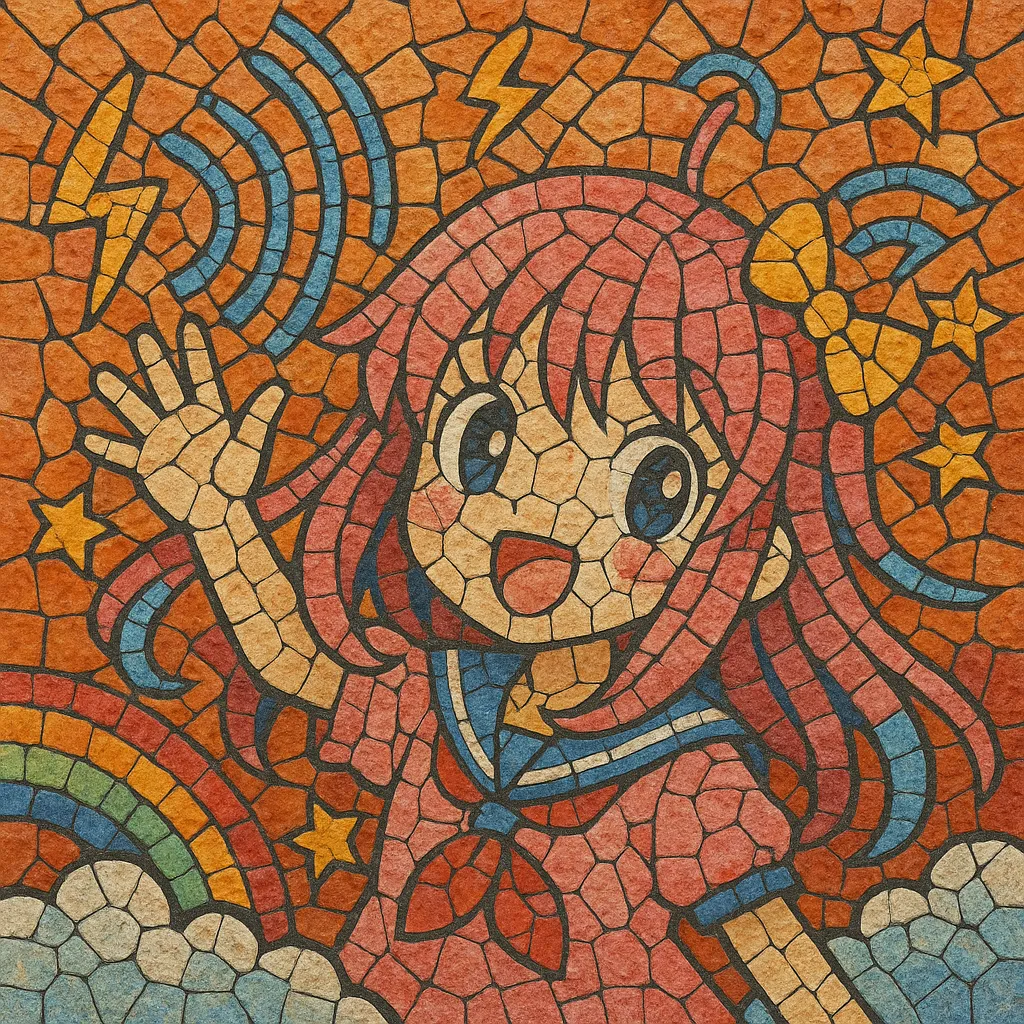Denpa is a hyper-cute, deliberately "weird" branch of Japanese pop associated with Akihabara otaku culture, eroge/visual novel theme songs, and doujin circles. Its name comes from denpa-kei ("radio-wave type"), a tongue‑in‑cheek label implying a brain‑melting, nonsensical, or deliriously catchy quality.
Musically, denpa blends sugary idol-style melodies, high-pitched vocals, and toy-like synth timbres with chiptune bleeps, game sound effects, and rapid-fire call‑and‑response hooks. Lyrics lean into surreal wordplay, onomatopoeia, otaku in-jokes, and cute character personas. Arrangements are maximalist and colorful, often with sudden modulation “key-ups,” dense countermelodies, and an anime‑OP sense of instant memorability.
The term denpa-kei emerged in Japan as a playful descriptor for eccentric or "radio-wave"-scrambled aesthetics. In music, it coalesced around late-1990s to early‑2000s Akihabara culture, where doujin circles and eroge/visual novel studios commissioned overtly cute, intensely catchy theme songs. Early scene hubs included indie events, game/anime conventions, and netlabel communities.
Denpa’s sound took cues from idol kayō and kayōkyoku songwriting, but exaggerated the cuteness, speed, and novelty. Producers layered bright synths, chiptune bleeps, game SFX, and cartoonish interjections under high‑register vocals adopting moe character personas. Hooks were engineered for instant recognition—similar to anime OP/ED—but with deliberately surreal, comedic, or chaotic twists.
By the mid‑2000s, denpa songs became synonymous with eroge/visual novel openings and doujin compilations, while circles like IOSYS and acts like MOSAIC.WAV helped codify the style. The Touhou arrange community further amplified denpa’s reach, blending its vocals with harder club forms (J-core, happy hardcore) and internet meme culture.
Through the 2010s, denpa aesthetics diffused into idol projects (e.g., Dempagumi.inc), utaite culture, and producer‑vocalist collaborations featuring Nanahira and others. Its hyper‑kawaii maximalism informed later genres that prize animated timbres and sparkly excess—such as kawaii future bass and parts of hyperpop—while remaining a staple sound for otaku‑centric music and doujin events.


